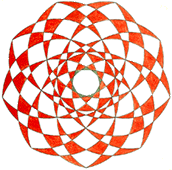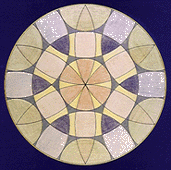|

|
Remo F. Roth
Dr. oec. publ., Ph.D.
dipl. analyt. Psychologe (M.-L. v. Franz)
|

|
© copyright 2002 by
Pro Litteris, Zürich. All rights reserved
Urheberrechtsverletzungen
werden international verfolgt. Genehmigungen zur Publikation von
Zitaten durch den Autor über email
With many thanks to Gregory
Sova, Ph.D. (LA, CA) and Phyllis Luthi (CA) for the help with the translation
Wolfgang Pauli and
Parapsychology
(Part 1)
(Extended English version of the German
article)
1. Pauli's change of mind in reference to
parapsychology in the 30's:
Up to the publication of the first half of
his latter letters from 1950 to 1954 in the years 1996 and 1999
people knew the physicist and Nobel laureate Wolfgang Pauli (1900 -
1958) for the most part as the prominent co-founder of Quantum physics. With the postulation of the Pauli
principle, named after him, the spin of the electron and the "phantom
particle" neutrino (that really is the antineutrino), he had certainly and quite
essentially contributed to the basic premises of quantum physics.
Therefore, it seems very astonishing, that as
Pauli aged, he became more and more interested in parapsychology and
in this respect dealt a lot with a synchronistic understanding of
biology and the theory of evolution.
In 1934 he made a disparaging assessment
about parapsychology in a letter to Jung. He indicated:
"As far as the
‘parapsychological’ phenomena in particular are concerned, I certainly do not know of any factual material (and
even if I did, God knows whether I would believe any of it)."
However he wrote this sentence - for
physicists the usual devaluation of the irrational - in context with
his wasp phobia, with dreams full of oscillation symbols (light and
dark stripes, rhythms) that had pursued him throughout his life, and
with the possibility of a "non-spatial, non-temporal form of being of
the psyche."
In this letter Pauli referred to certain
revolutionary ideas that Jung had published in his article The
Soul and Death in 1934. These ideas set forth doubts toward the
general dependency of the psyche on the brain, because
parapsychological facts, especially the "spatial and temporal
telepathic phenomena," show the opposite. Jung then
continues:
"The limitation of
consciousness in space and time is such an overwhelming reality
that every occasion when this fundamental truth is broken must
rank as an event of the highest theoretical significance, for it
would prove that the space-time barrier can be
annulled. The annulling factor would then be the psyche,
since space-time would attach to it at most as a relative and
conditioned quality. Under certain conditions it [the psyche;
RFR] could even break through the barriers of space and
time precisely because of a quality essential to it, that is, its relatively trans-spatial and trans-temporal nature. This
possible transcendence of space-time, for which it
seems to me there is a good deal of evidence, is of such
incalculable import that it should spur the spirit of research to
the greatest effort. Our present development of consciousness is, however, so backward that in general we still lack the scientific
and intellectual equipment for adequately evaluating the facts of
telepathy so far as they have bearing on the nature of the psyche.
I have referred to this group of phenomena merely in order to
point out that the psyche’s attachment to the brain,
i.e., its space-time limitation, is no longer as self-evident and
incontrovertible as we have hitherto been led to believe."
[emphasis mine]
In his letters to Jung - Pauli always indicates
his intent to let the unconscious participate. This is why we can
conclude hypothetically that the parapsychological phenomena
constellated in him - known today in the realm of physics as the
so-called Pauli effect (see Wolfgang
Pauli und die Wiederkehr der
Weltseele)
- has on the one hand something to do with these symbols of
oscillation, frequency and rhythm, that persecuted him in his dreams
till the end of his life, but also may belong to the relativity of
space and time in altered states of consciousness, where the
influence of the collective psyche is increased. We will see, that it
is exactly this Eros
consciousness that psychology calls
in a devaluating manner the "abaissement du niveau mental"
(Pierre Janet), which can deal with these deepest levels of the
collective psyche, with its "relatively trans-spatial and
trans-temporal nature."
More or less one year after his disparaging
remarks it seems that Pauli's disapproval of parapsychology was
reduced. Pauli sent Jung a letter on June 22, 1935 and the attachment contained
a series of dreams and imaginations from this time period. He
writes:
"You will find that
it contains, on the one hand, indications of all sort of
ideological conflicts - and those I shall have to sort out by
myself as far as I can - and on the other hand there are close
links with those controversial and so-called parapsychological
areas that are not easily accessible. The fantasies often assumed
their own peculiar character by using physical terminology very
familiar to me (such as "isotope separation," "fine structure,"
"reciprocity between self-induced rotation and
orbit," „resonant bodies," "radioactive nucleus," etc.), to
express analogies with psychic facts that I can only vaguely surmise."
It is obvious that Pauli was very astonished
about the strong relationship his "products of the fantasy"
developed with parapsychology in this time. Unfortunately, these
dreams are not yet published, but we do know that at exactly that
time (1934) Paul also dreamed a dream that forced him to take into
consideration that there is yet a hidden dimension of reality behind
quantum physics:
"A man resembling Einstein
is drawing the following figure on a board:

... It showed me quantum
mechanics and so-called official physics in general as a
one-dimensional section of a two-dimensional, more
meaningful world, the second dimension of which could be only the
unconscious and the archetypes" [emphasis
mine]
Albert Einstein never accepted quantum
mechanics because he was convinced that it must - because of its
acausal character - be imperfect. He looked for "hidden
variables" on a deeper physical level to correct this supposed deficiency.
On the contrary, Wolfgang Pauli was of the
opinion that the inclusion of this further dimension could not
consist in Einstein's "regressive idea" to postulate a new causal and
purely physical world behind the acausality of quantum physics by
finding the "hidden variables". He began to figure out at about
this time that the "Einstein" of his dream represented a shadow
figure in himself, who wanted to bring together this hidden dimension
with depth psychology and parapsychology. Almost twenty years later
(in 1953) he writes to Jung:
"I remarked to Bohr
... that Einstein was regarding as an imperfection of wave
mechanics [RFR: quantum physics] within physics what in
fact was an imperfection of physics within life."
The problem of the imperfection of quantum
physics seems to be a pseudo problem (Scheinproblem): The hidden
dimension behind quantum physics is not a physical one, but one of
life itself, and to explore this world of wholeness we must overcome
our one-sided causal view and include depth psychology as well as
parapsychology.
In the course of the next 18 years this
change of attitude concerning parapsychology succeeded in Pauli and
culminated in his demand of a reunion of physics with parapsychology!
Therefore the question then must be asked, what circumstances had
motivated the Nobel laureate to quit his refusal of parapsychology
and to get seriously down to the problem of the unification of it
with physics.
Before we deal with this, let's go back to
the early 1930's. During his greatest life crisis when Pauli was
about 30 he came into contact with Carl Gustav Jung's psychology, and
it never let go of him. From that point on he began to dream
intensively and these dreams accompanied him until his early death at
the age of 58.
Pauli always wondered about the fact that
these dreams did not utilize Jung's psychological terminology, but
rather spoke the rational language of physics, but expanded it more
and more in a symbolic terminology, not at all understandable in the foreground. So for example one of these dreams wanted to convince him
with hard-nosed regularity that the physical term "radioactivity" has
a similar meaning as the depth psychological
term "synchronicity," introduced by Carl Gustav Jung (see Radioactivity
and Synchronicity in the Pauli/Jung
Letters).
If one argues on a purely rational basis, one has to establish that
this equivalence represents a complete nonsense, because except the
common property of acausality there are, to my knowledge, no further
points of reference between the two. Moreover, Pauli was himself
conscious about these common roots of both phenomena. Under these
circumstances no dreams with such a content should appear, as Jungian
theory and experience shows.
According to this theory, dreams are actually
"pure nature". Therein the "Mutterlauge", Jung's collective psyche,
represents a self-regulating system. Therefore it is the job of
dreams to compensate the one-sidedness of consciousness with the help
of the "preconscious knowledge" (not to be confused with the Freudian
meaning) hidden in it (the collective psyche). In this way this
instance of wisdom presents, in a symbolic form, a yet hidden
compensatory deeper truth to the prejudiced consciousness. It is then
the challenge of the ego, to integrate these symbolic pictures by
transforming them into a rational language. By this procedure old
prejudices are eradicated and conscious knowledge is extended.
Exactly this process was constellated in Wolfgang Pauli, but we will
see, that - even he spent an incredible amount of time seeking for the
solution of this problem - he couldn't see the solution of the
problem to its conclusion.
Nevertheless, we can conclude with certainty,
that Wolfgang Pauli's change of opinion in reference to
parapsychology can be traced back to such "physical-symbolic dreams" (Pauli). He himself pointed out in the above-mentioned letter
to Jung, that "the fantasies assumed their own peculiar
character" [emphasis mine] "by using physical
terminology very familiar to me," "to express analogies with
psychic facts that I can only vaguely surmise."
Pauli talks here of a unique technique, the
so-called Active Imagination of Carl Gustav Jung he learned between
the years 1931 and 1934. In Jung's own words - taken from the
handwritten material of his lecture in 1938 - this technique serves
to let the contents of dreams and fantasies develop
themselves, instead of consciously asking for the
context, as in dream analysis. As a result of this conscious decrease
of the discriminating Logos the Eros
consciousness can increase. The
latter is much more connected to the collective psyche and its
contents. This is why Pauli's "fantasies assumed their own peculiar character," which means that the "preconscious knowledge" (Jung) of
the collective psyche showed him more complete and deeper
processes in nature, much more on an psychophysical (or
psychoid; see below) than on a physical level. Like this, Active
Imagination helped Pauli considerably to expand his physically
limited point of view. But because of his dogmatic defense of the
conservation law of energy (see Radioactivity
and Synchronicity...)
he was not able to come to the end of the process, which was
constellated in him. This is why we must continue his work at the
beginning of the 21st century.
part
2
proofread by GJS,
12/24/2003
See also further articles about Wolfgang Pauli in
http://www.psychovision.ch/rfr/roth_e.htm
Homepage
Remo F. Roth
back

29.5.2002
|